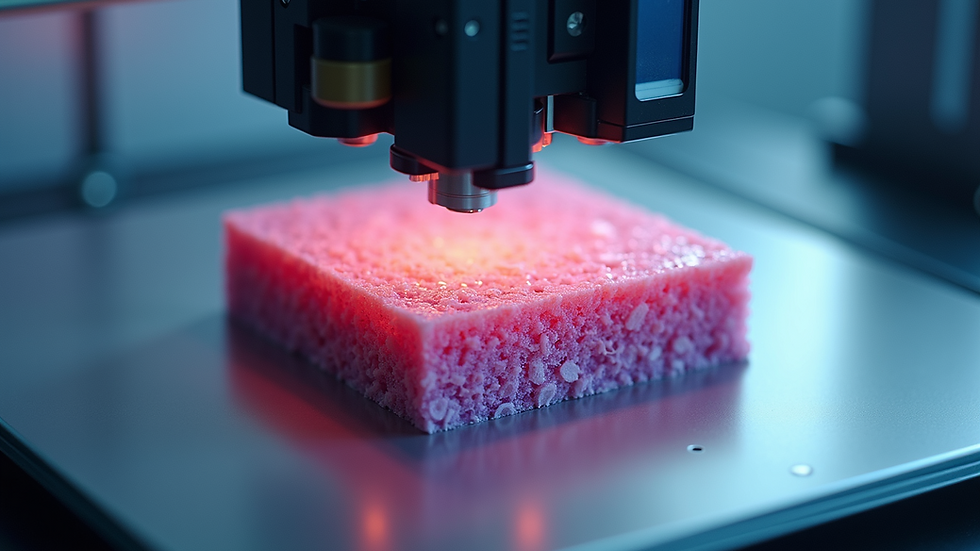Advancements in Regenerative Medicine for Healing
- LeNae Goolsby

- Jun 23
- 4 min read
Regenerative medicine is a rapidly evolving field focused on repairing, replacing, or regenerating damaged tissues and organs. This innovative approach is transforming how we think about treating injuries, chronic diseases, and age-related health issues. With advancements in science and technology, regenerative medicine holds the promise of not just healing but also restoring lost functions in the body.
Understanding Regenerative Medicine
At its core, regenerative medicine leverages the body’s own healing mechanisms. This means harnessing biological processes—like stem cell therapy, tissue engineering, and gene editing—to repair damaged tissues. Regenerative medicine differs from traditional treatment methods, which often focus on alleviating symptoms without addressing the underlying causes.
Key Components of Regenerative Medicine
Stem Cell Therapy: Stem cells have the remarkable ability to develop into various cell types in the body. Researchers are exploring their potential to regenerate damaged tissues, such as cartilage in joints or nerve cells in the brain.
Tissue Engineering: This involves creating biologically compatible scaffolds that can support the growth of new tissues. Advances in 3D printing technology are enabling the development of tailored scaffolds for individual patients.
Gene Editing: Techniques like CRISPR-Cas9 allow for precise changes to DNA sequences, potentially correcting genetic disorders or enhancing the body’s ability to heal itself.

The Promise of Regenerative Medicine
Regenerative medicine offers hope for many chronic conditions that have previously been deemed irreparable. According to the National Institutes of Health, regenerative therapies have the potential to dramatically alter the treatment landscape for diseases such as:
Osteoarthritis: Stem cell injections are being researched for their ability to promote cartilage regeneration.
Heart Disease: Scientists are exploring ways to generate heart muscle cells to repair damaged areas after a heart attack.
Neurological Disorders: Techniques that promote nerve regeneration may benefit conditions like spinal cord injuries and multiple sclerosis.
These advancements signal a shift towards more holistic and effective treatment options in the medical field.
What is an Example of Regenerative Care?
One notable example of regenerative care is the use of platelet-rich plasma (PRP) therapy for joint repair. PRP therapy involves extracting a patient’s blood, processing it to concentrate the platelets, and then injecting it back into the damaged area. This treatment has gained popularity for conditions like tendon injuries and osteoarthritis.
Research indicates that PRP can enhance healing by delivering growth factors and attracting the body’s own stem cells to the site of injury. A study published in the American Journal of Sports Medicine demonstrated that patients receiving PRP injections for knee osteoarthritis reported a significant reduction in pain and improved function.

Challenges in Regenerative Medicine
Despite its promise, regenerative medicine faces several challenges:
Regulatory Hurdles: As with any new treatment, navigating through regulatory pathways to gain approval can be a lengthy and complex process. Ensuring the safety and efficacy of new therapies is paramount, which often prolongs the availability of promising treatments.
Cost: Research and development in regenerative medicine can be expensive. Many of these therapies are not yet covered by insurance, making them inaccessible for some patients.
Ethical Considerations: Stem cell research, particularly those derived from embryos, raises ethical questions. Ongoing discussions are crucial to ensure responsible scientific practices.
Real-World Applications and Case Studies
Innovations in regenerative medicine are not just theoretical; they are being implemented in clinical settings. For instance, researchers at the University of California, San Diego, have successfully used stem cells to regenerate damaged cartilage in the knee joint. The results, published in Nature Medicine, indicate that patients experienced less pain and improved mobility, showcasing the potential of regenerative treatments.
Another case is the use of bioengineered skin for burn victims. Burn injuries often lead to extensive tissue loss, which can be debilitating. Companies are developing skin substitutes that are made from living cells to promote regeneration and minimize scarring.

The Future of Healing
As research in regenerative medicine progresses, we can expect to see numerous advancements. Ongoing studies are exploring innovative solutions for various health conditions, including:
Diabetes: Investigations are underway to create insulin-producing cells from stem cells to potentially reverse Type 1 diabetes.
Age-Related Degeneration: Regenerative therapies are being studied to counteract age-related changes in the body, promoting longevity and improving quality of life.
Cancer Treatment: Techniques that harness the immune system to regenerate healthy cells while targeting cancerous ones are gaining traction.
To ensure widespread access, it is crucial to address regulatory, financial, and ethical challenges as the field matures.
Building a Stronger Tomorrow
In conclusion, the advancements in regenerative medicine present a promising frontier in healthcare. As we continue to explore the potential of stem cells, tissue engineering, and gene editing, the possibilities seem boundless. With an emphasis on regenerative health care, we may soon see a world where healing is not just a possibility but a reality for many individuals facing chronic health challenges.
This evolving field invites us to reconsider our approach to health and healing, opening doors to innovative treatments that can ultimately enhance the quality of life for countless individuals worldwide. Let us embrace the advancements and continue to support research in regenerative medicine for a healthier future.




Comentarios